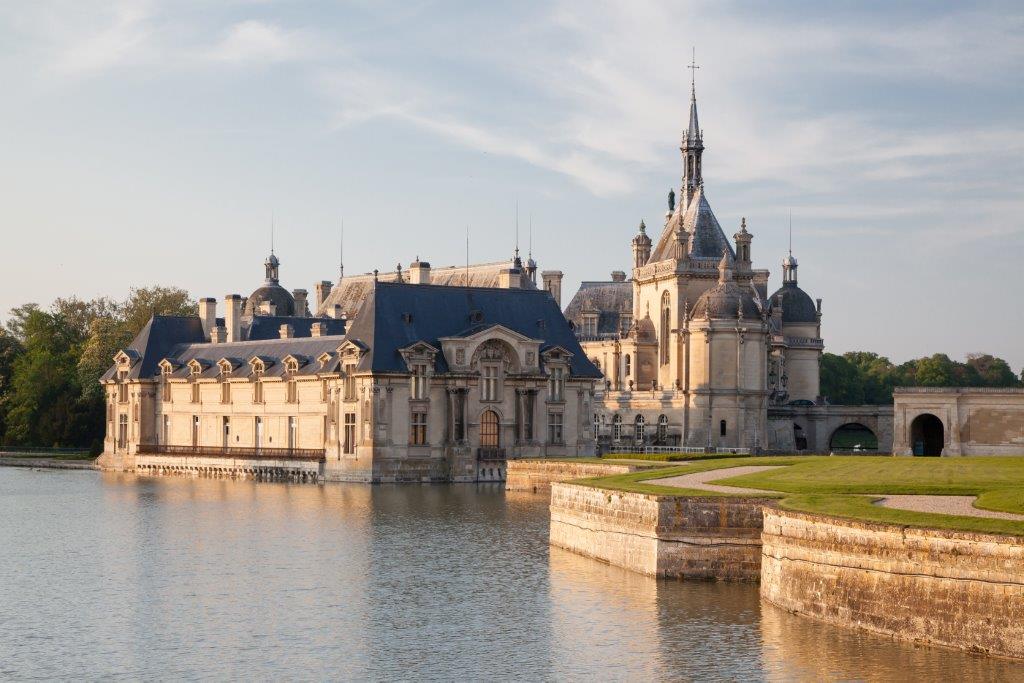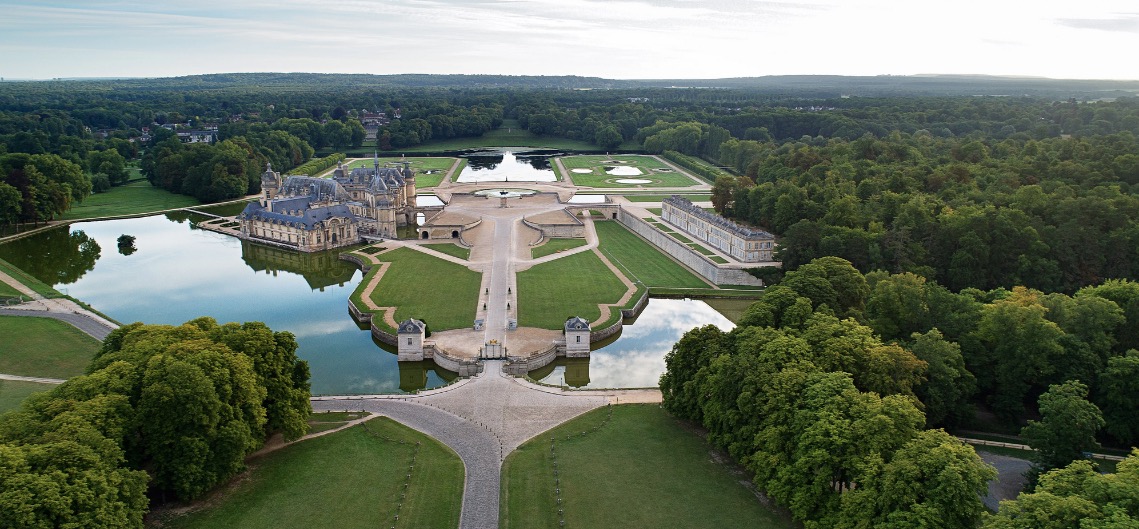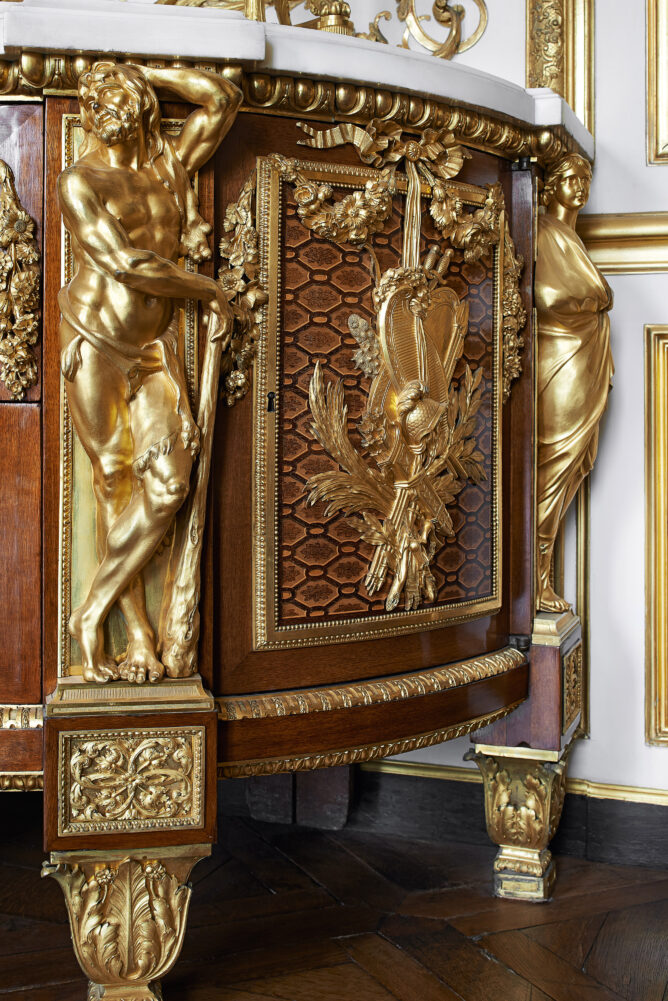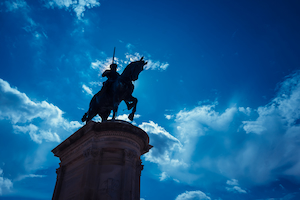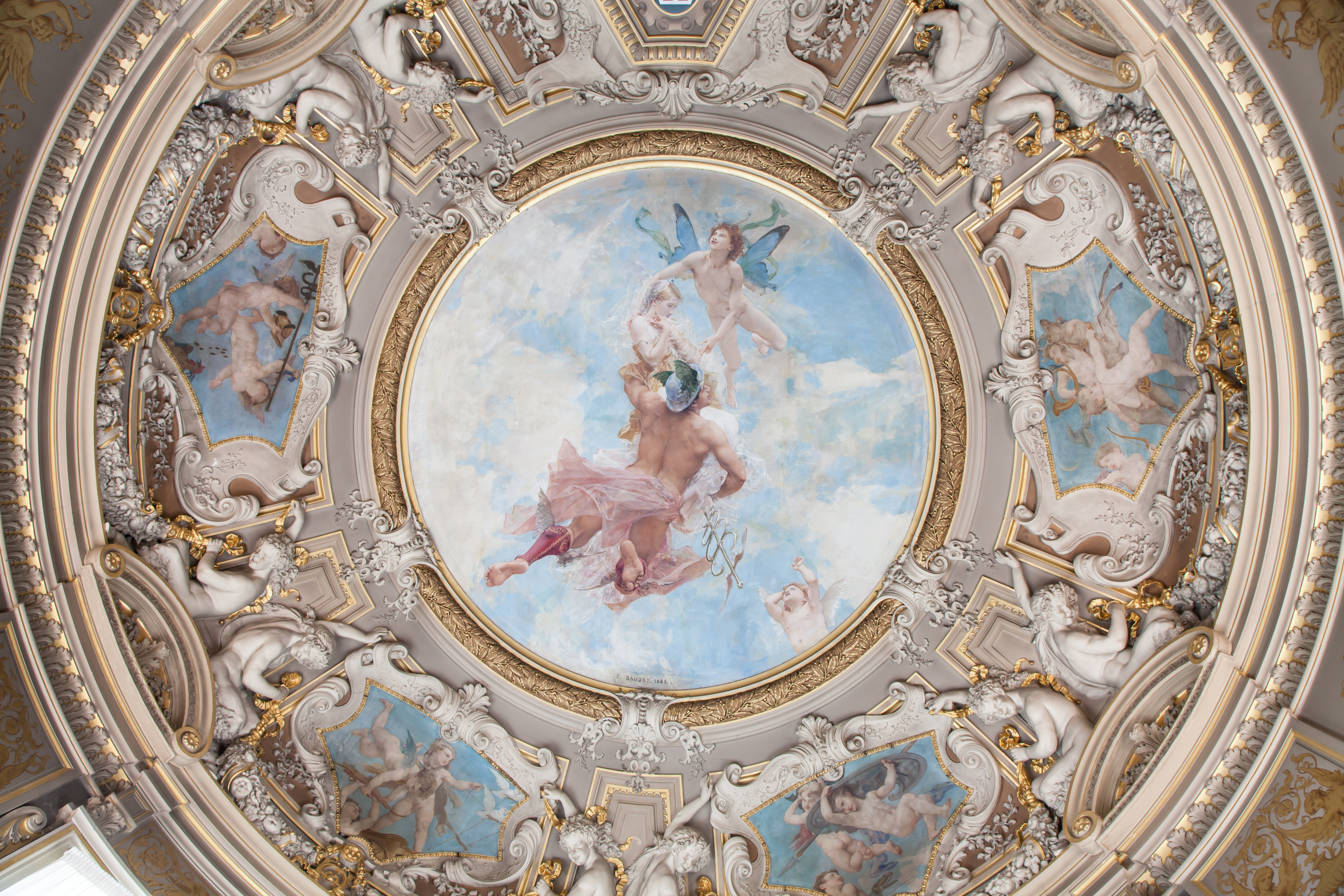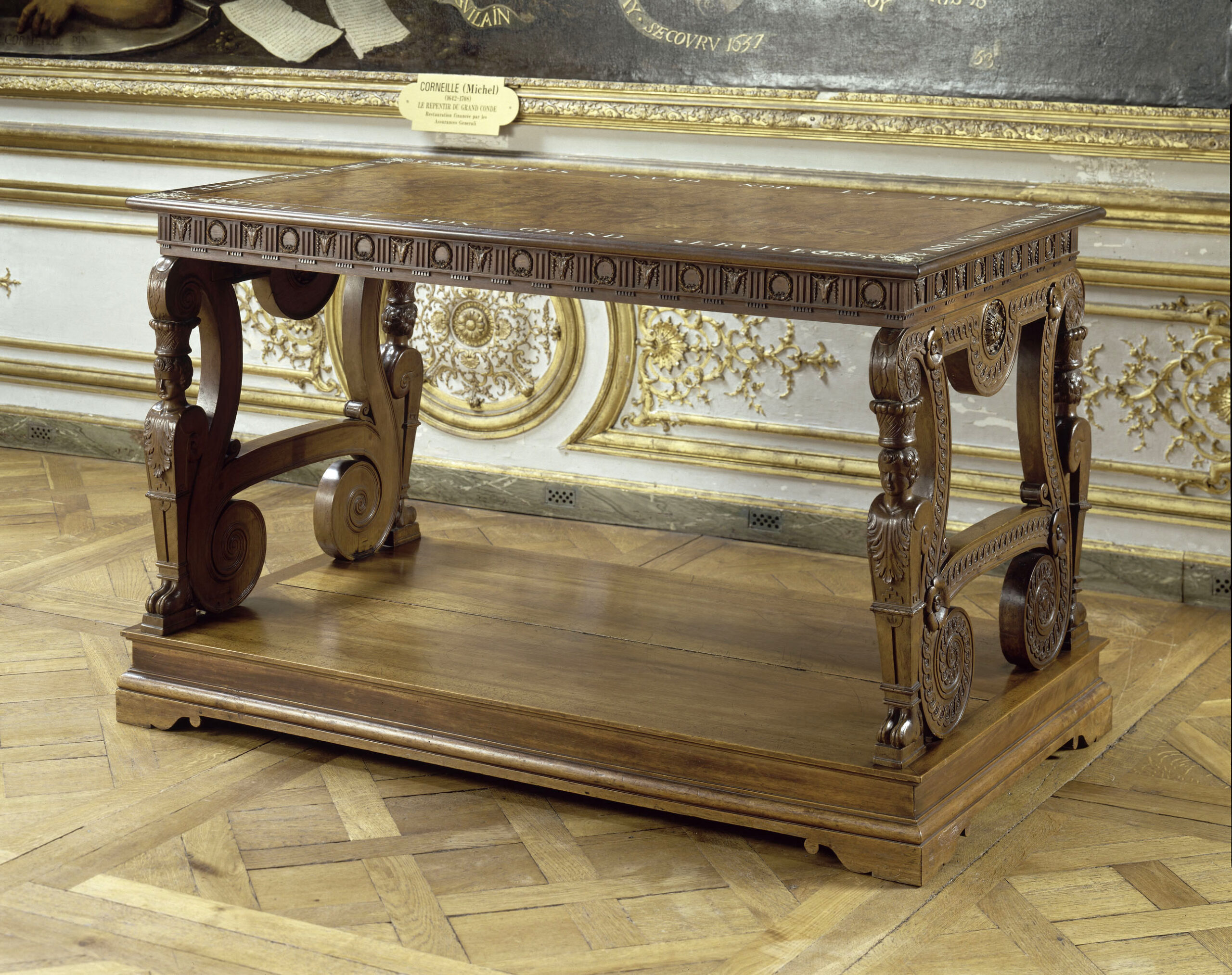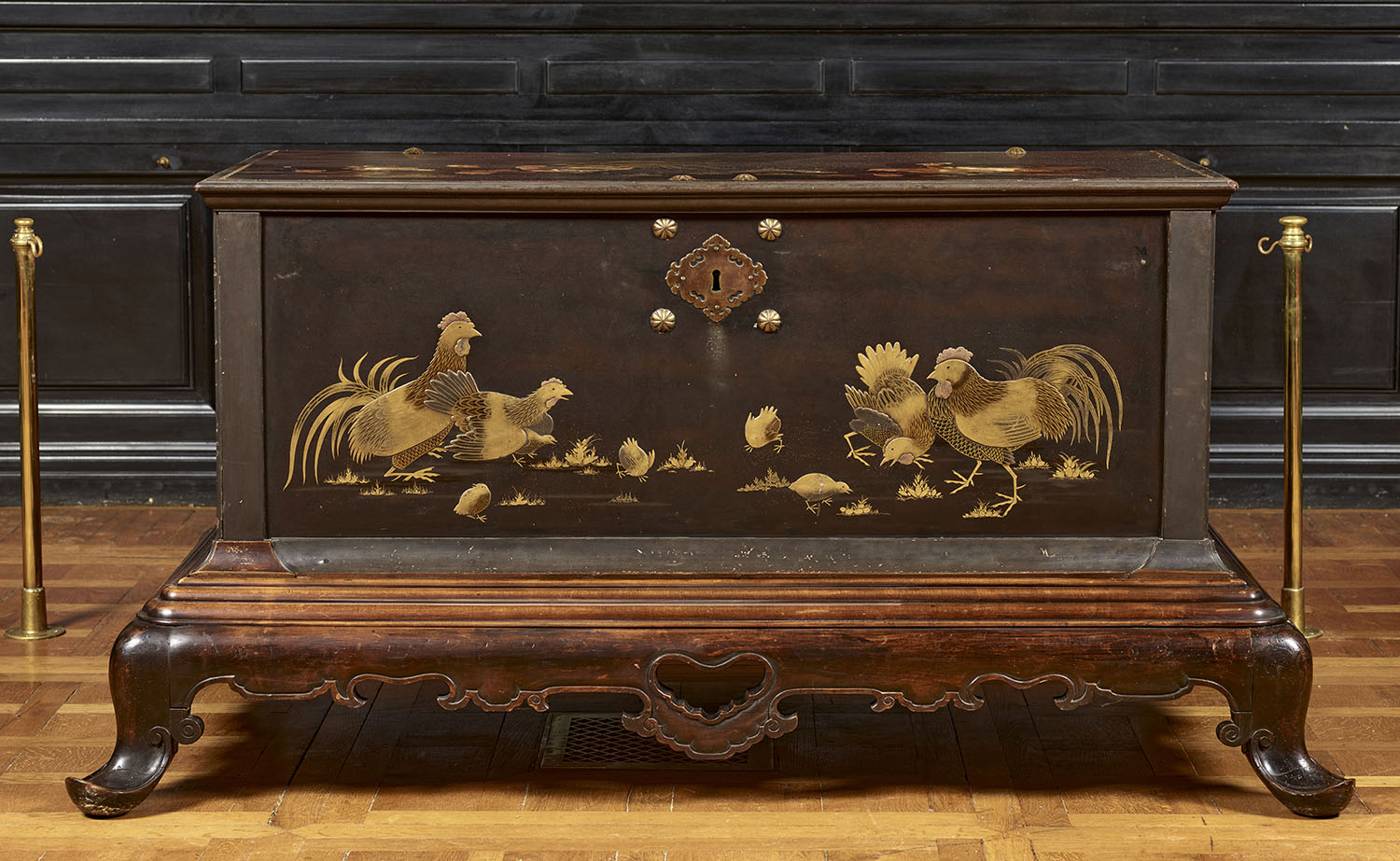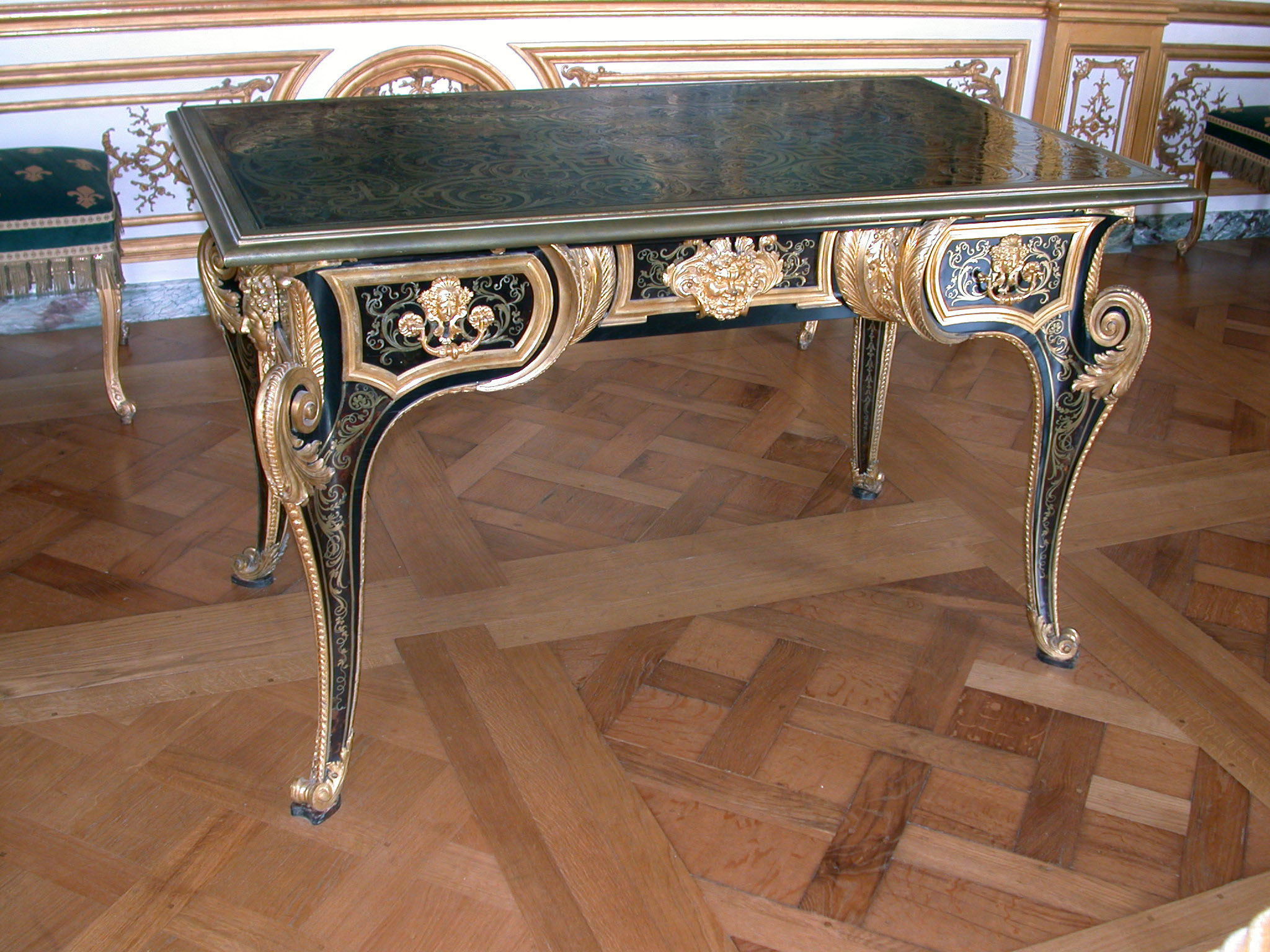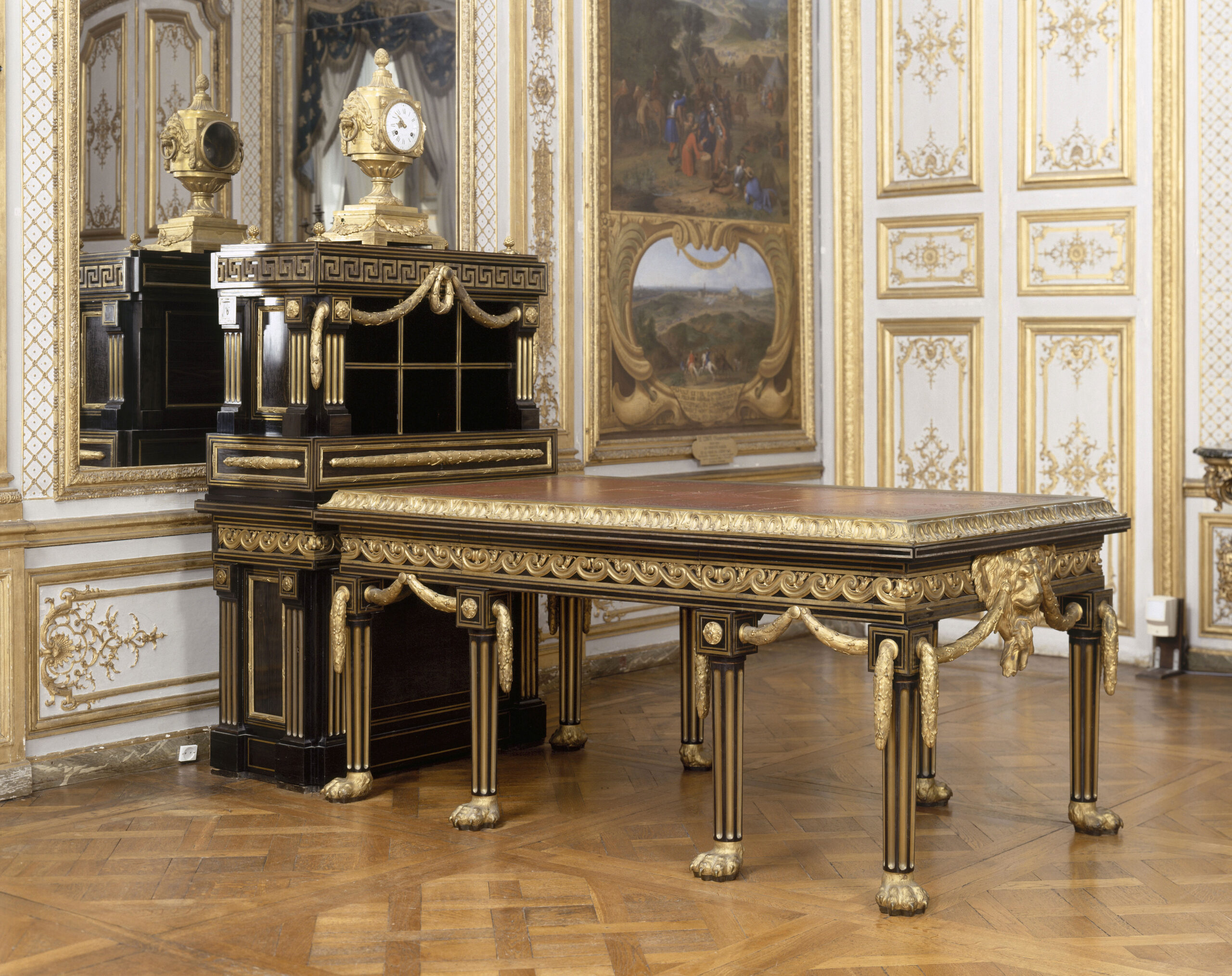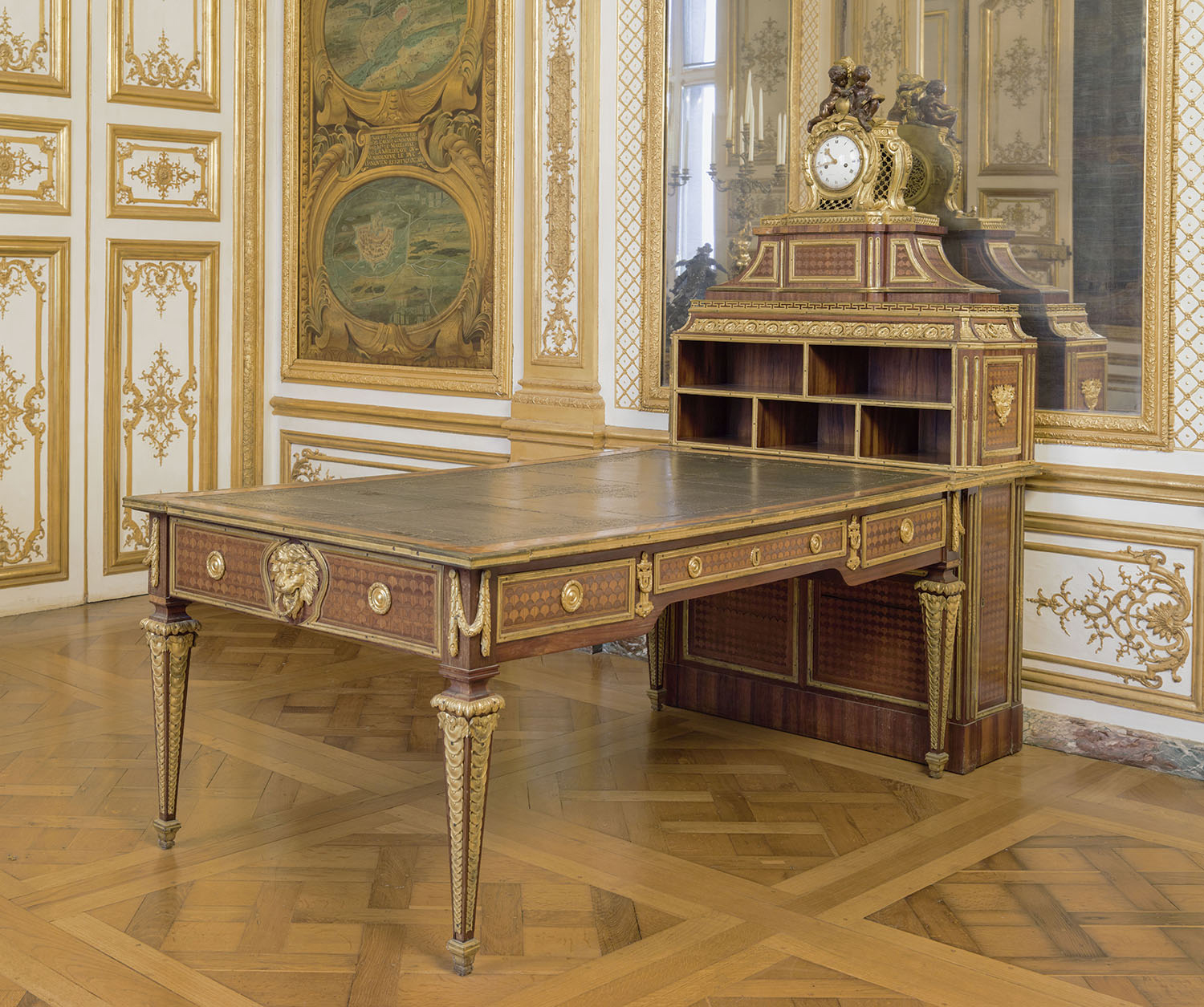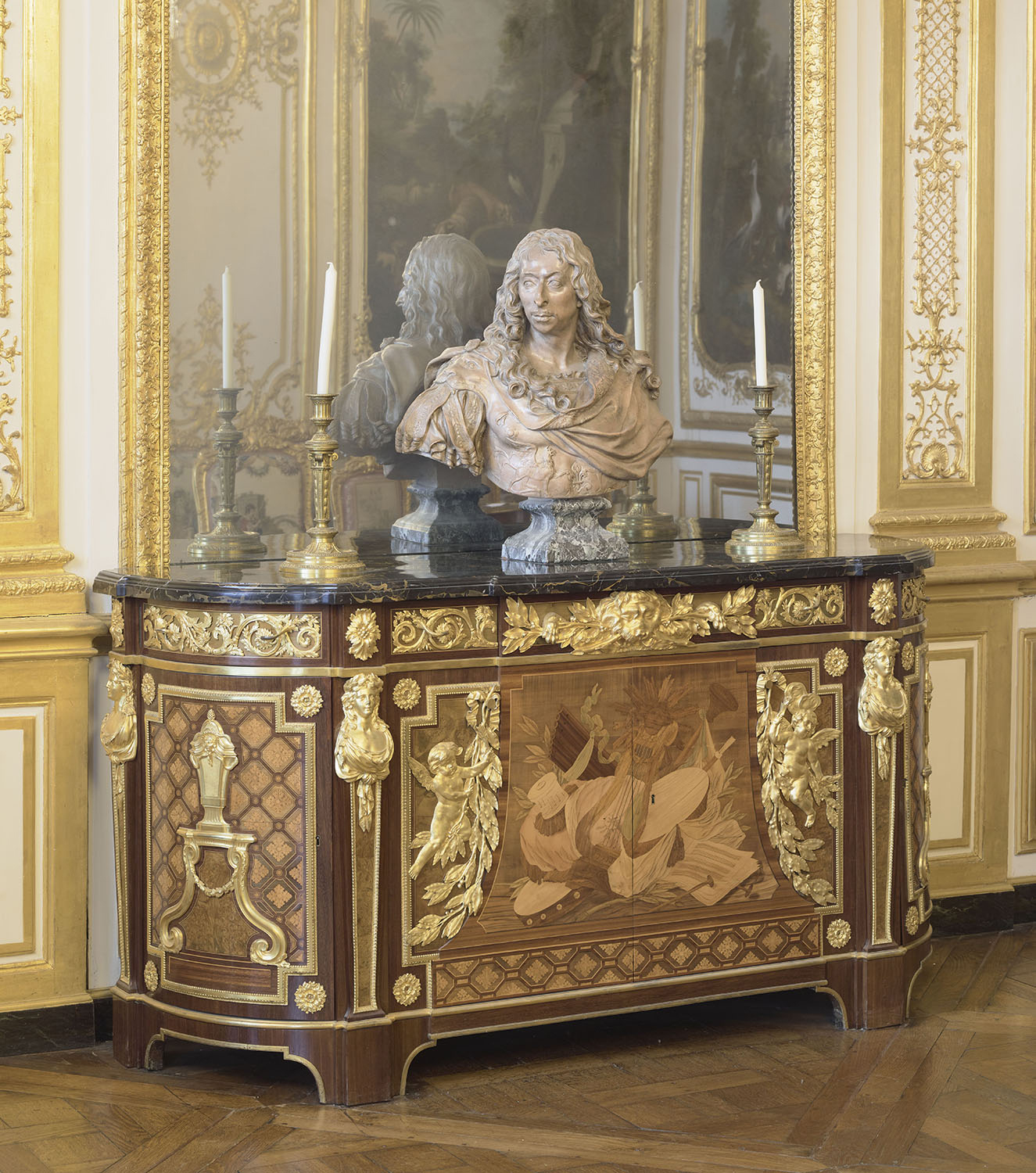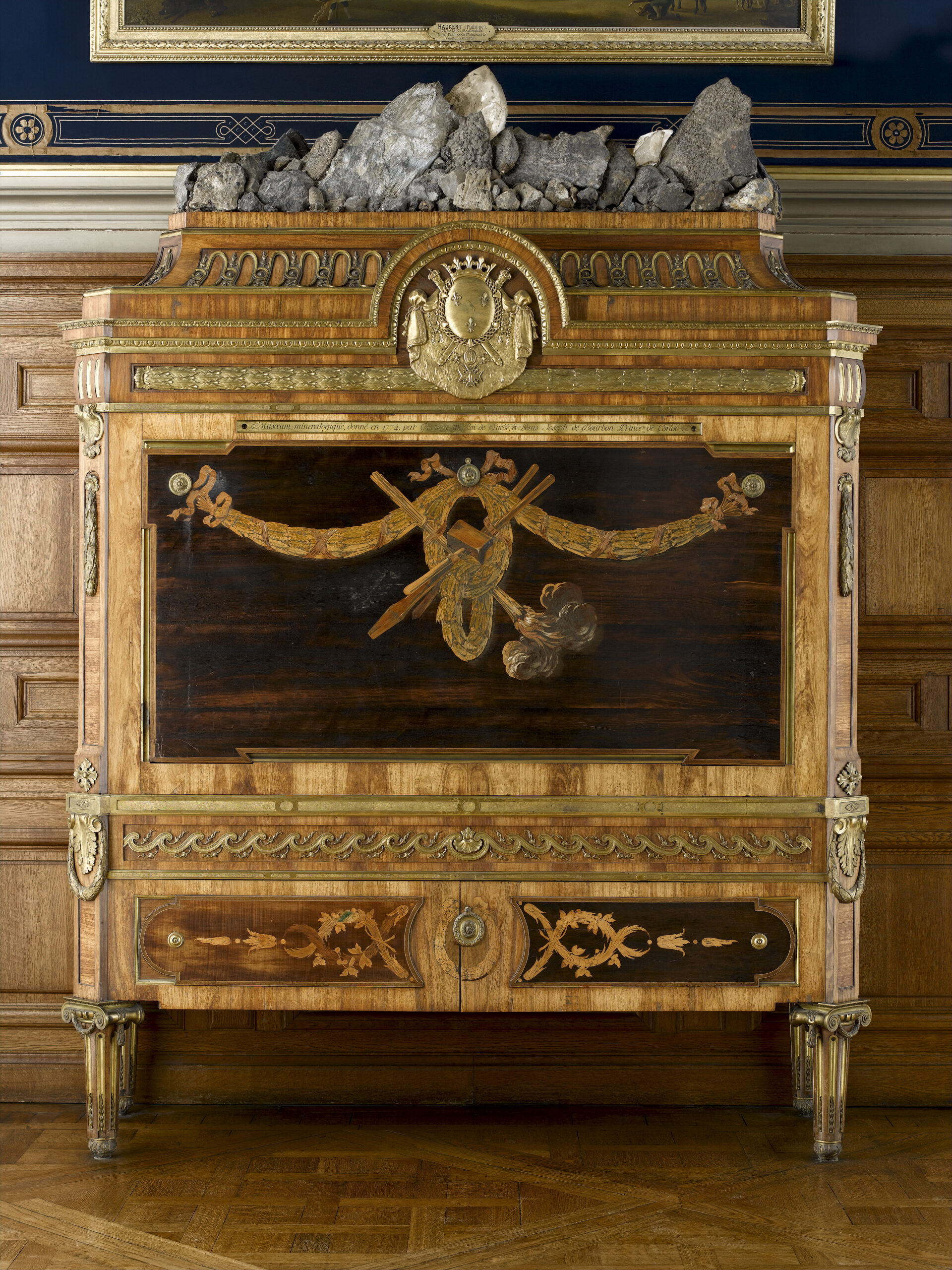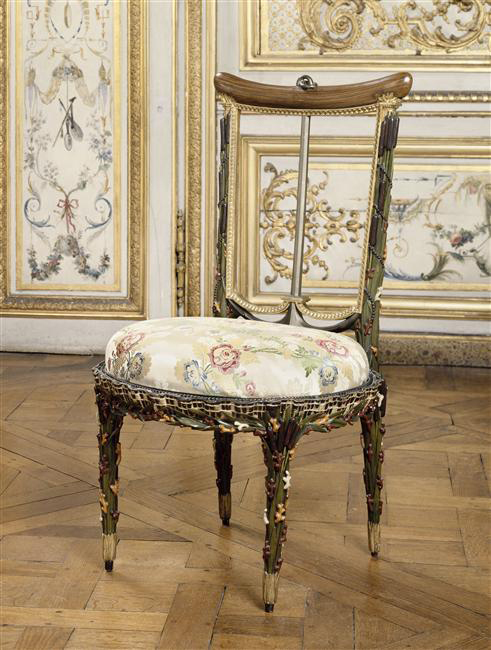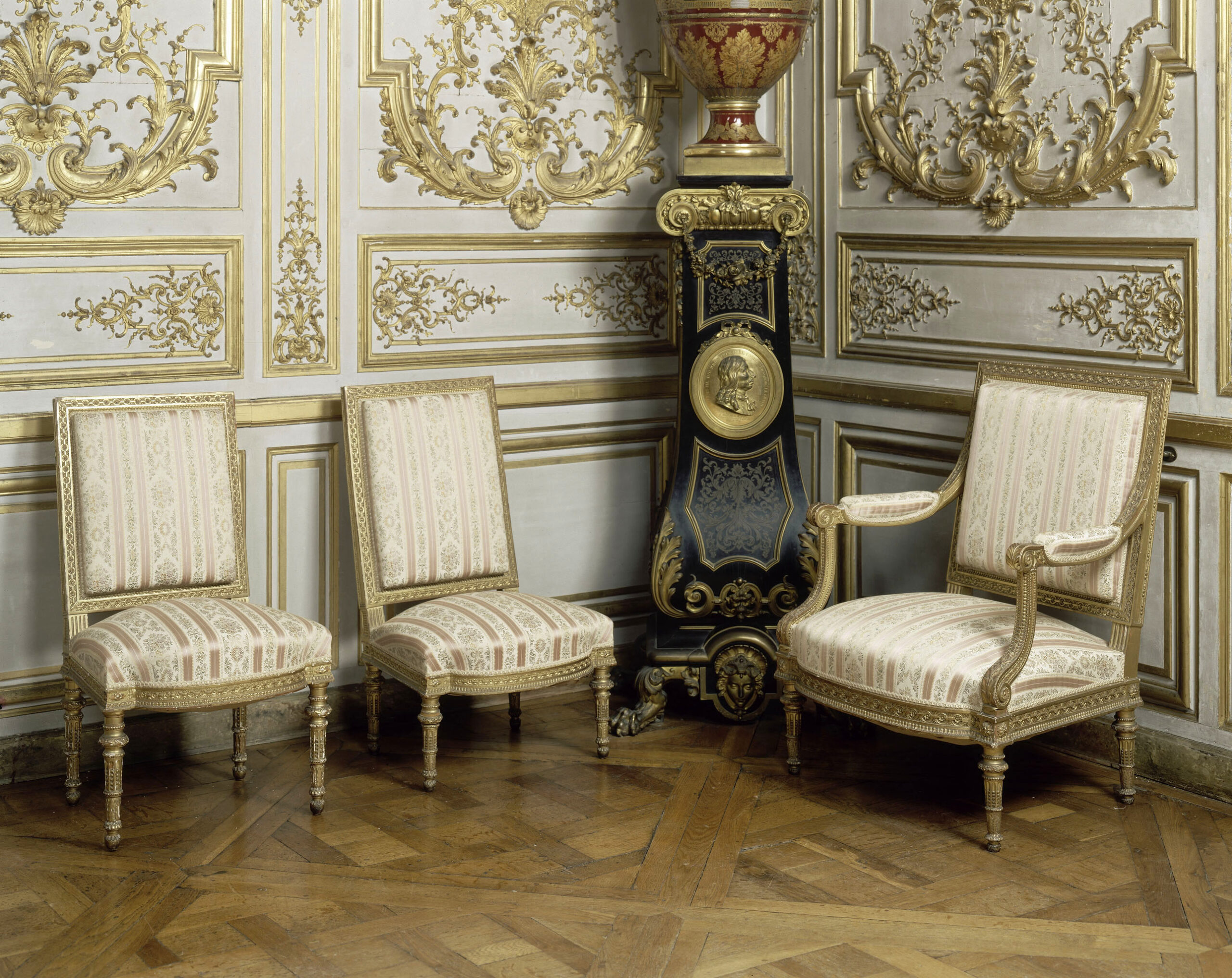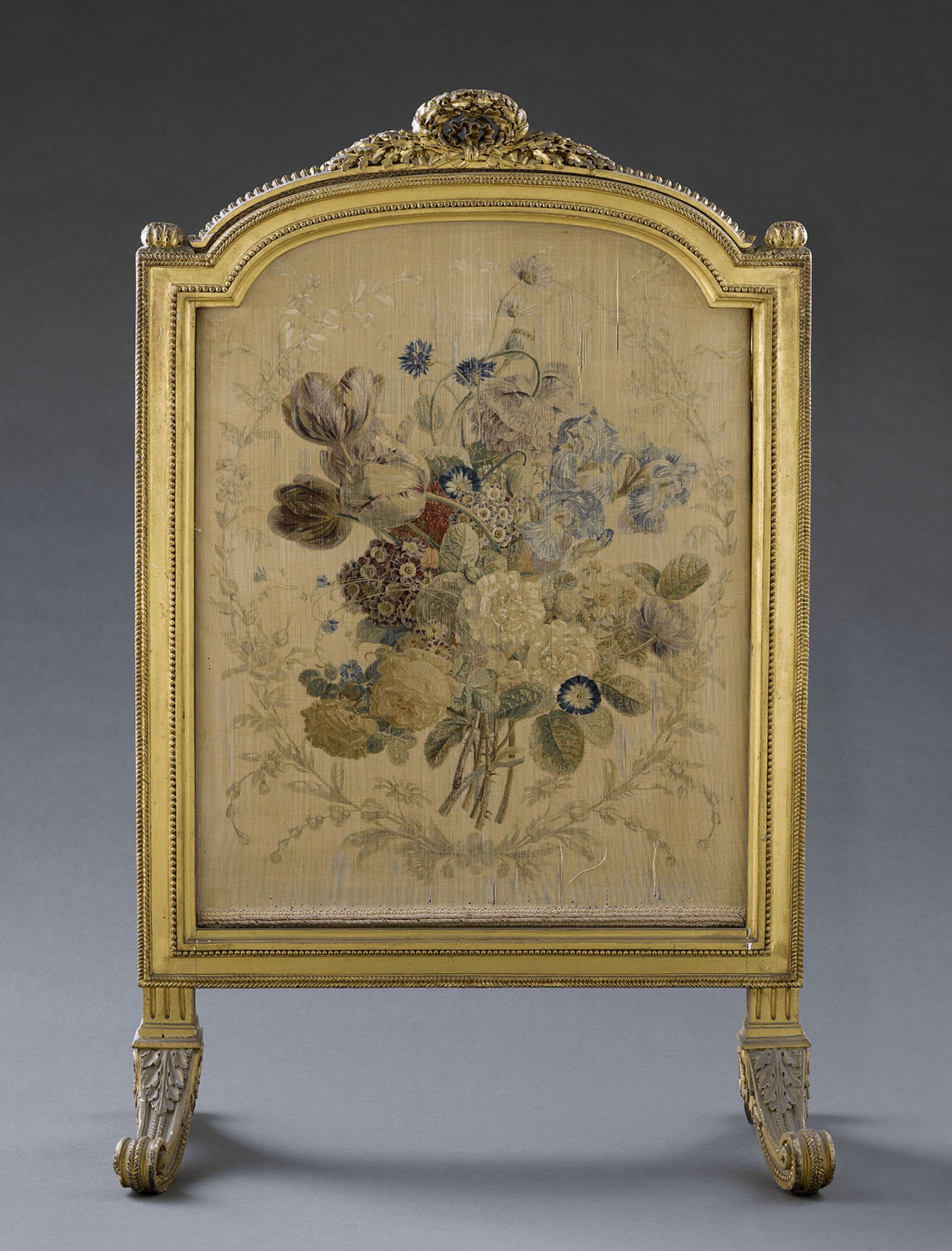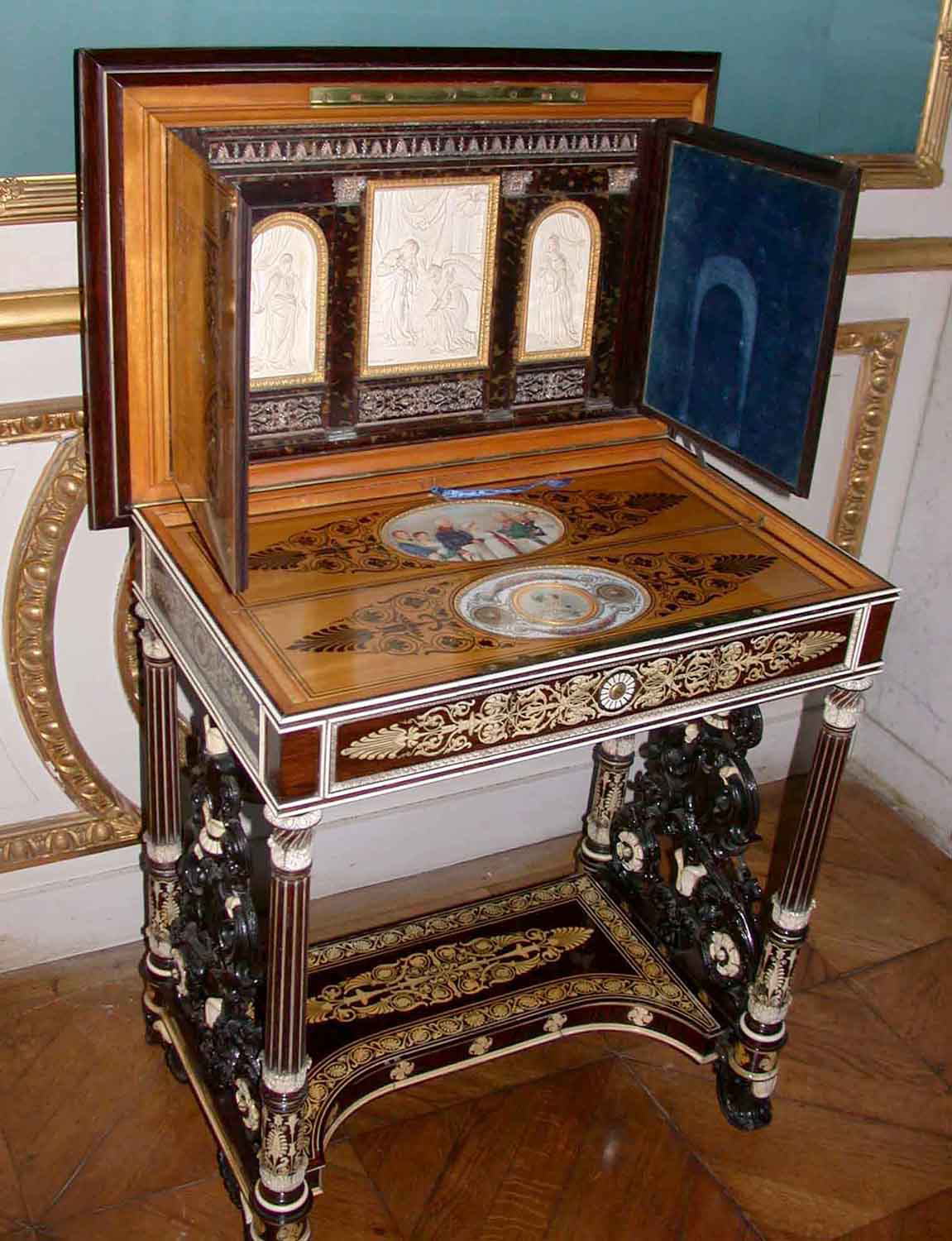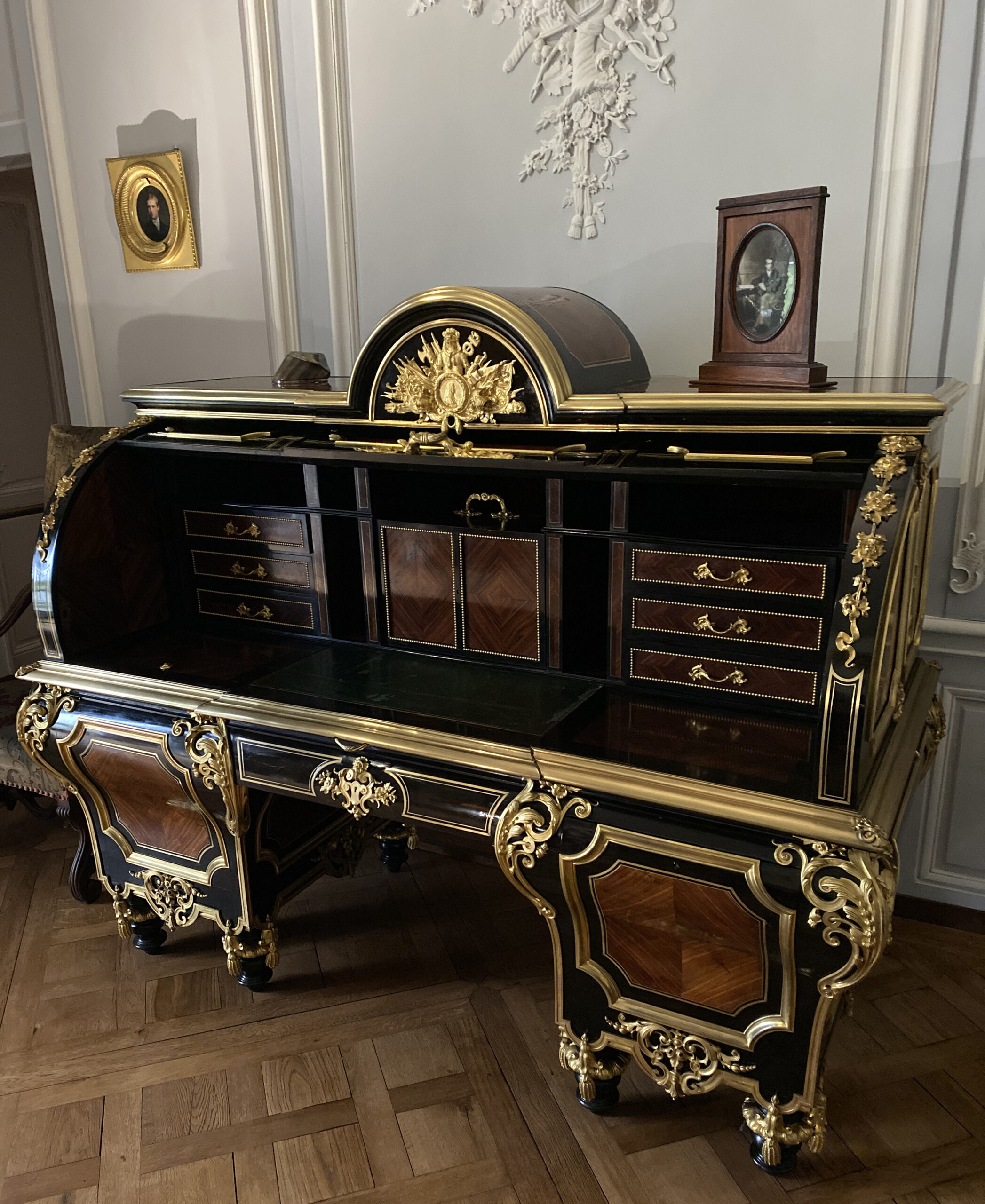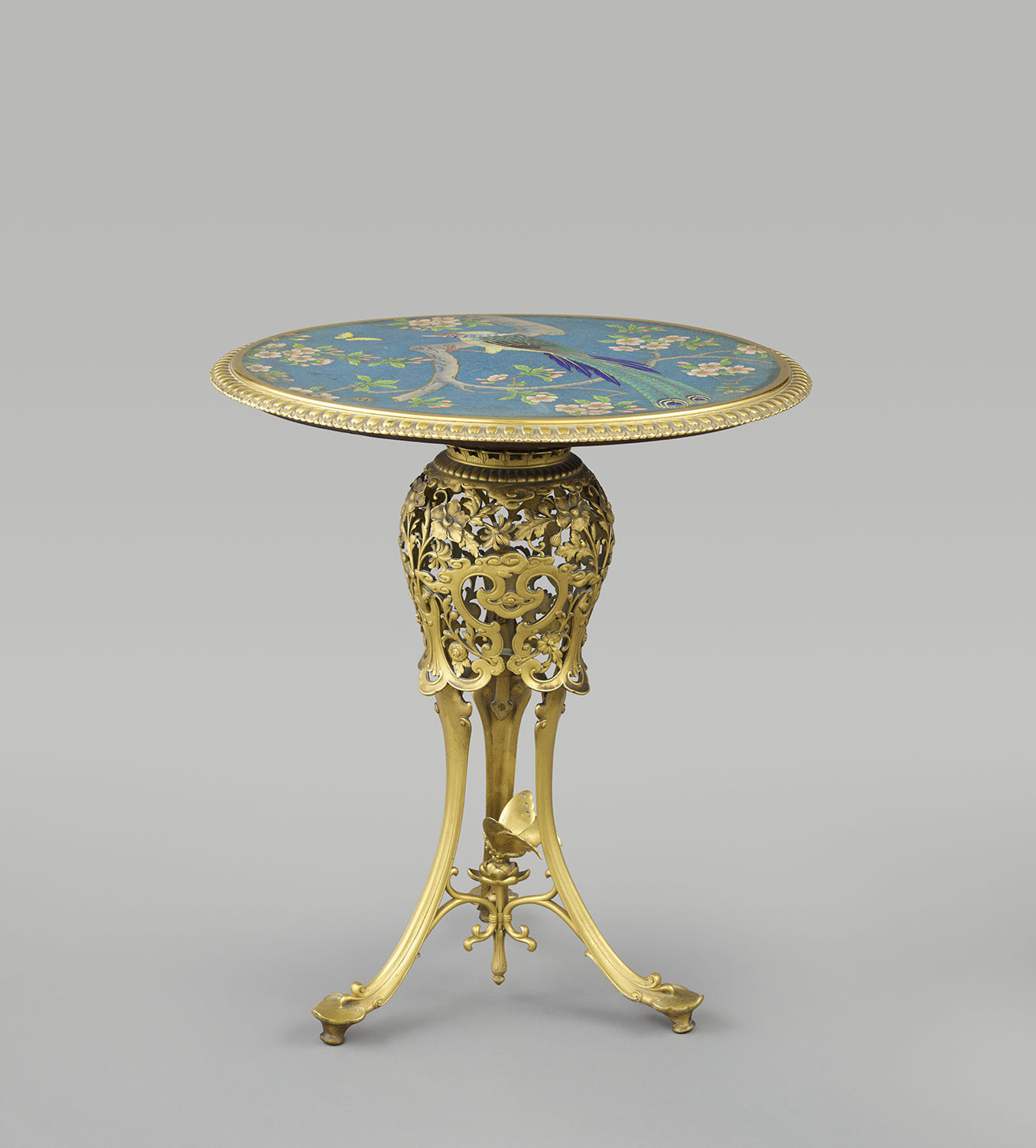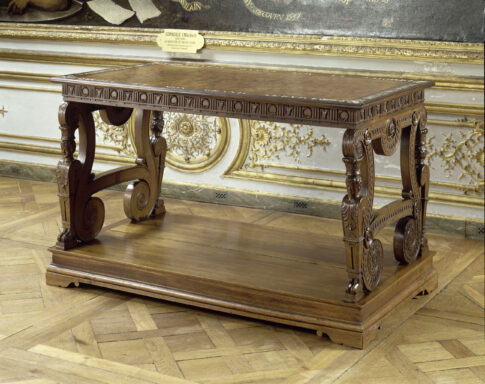
Vine wood table
Anonymous
Circa 1540
The Gallery of Battles
Vine wood table - Circa 1540
Artist : Anonymous
Walnut, vine wood, amaranth and ivory.
The tabletop is made from a single piece of vine wood, with Henri IV’s coat of arms and Anne de Montmorency’s motto. The veneer of the tabletop was probably obtained by peeling a vine stock with an exceptionally long straight section. This table is a source of curiosity and had been part of the Condé princes’ collections since the 17th century. Seized during the Revolution, it was subsequently returned to the last Prince of Condé.
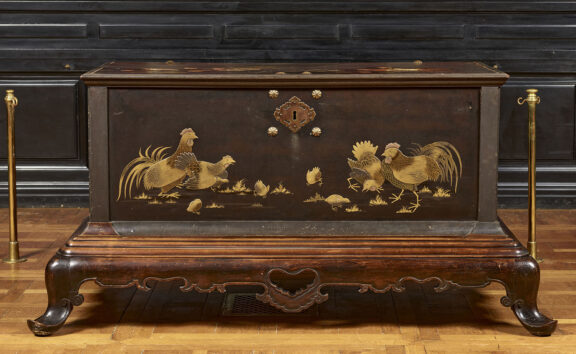
Chest
Japan
Edo period, circa 1675
The Tribune
Chest - Edo period, circa 1675
Artist : Japan
This large lacquered Japanese chest was exhibited in 1740 at the Château de Chantilly in the Large Suites, in the Gallery of Battles. It bears witness to the Duke of Bourbon’s taste for Asian pieces. The black lacquered panels are decorated with hens, cockerels and pecking chicks in a delicate relief, highlighted in gold and red. The sides of the chest are equipped with large gilt-bronze handles enabling it to be moved. When the Duke of Bourbon died in 1740, it contained precious textiles related to Chantilly’s printed textile manufactory.
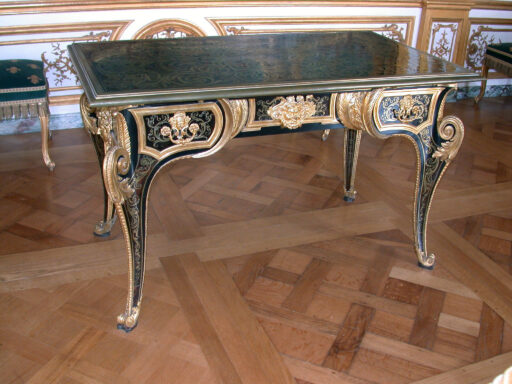
Writing Table
André-Charles Boulle
Circa 1715
The Music Room
Writing Table - Circa 1715
Artist : André-Charles Boulle
Oak and walnut. Tortoise shell veneer, ebony, brass. Gilded bronze decoration depicting female figures.
This writing table was ordered around 1715 from André-Charles Boulle by Louis-Henri de Bourbon, Prince of Condé, who installed it in 1720 in his office at the Château de Chantilly. Confiscated in 1793 and transported to Versailles in 1834 for the museum of French History created by Louis-Philippe, the table was loaned by the Château de Versailles in 2012 in exchange for a large writing table of Louis XVI, kept at the time in the Institut de France. This cross-loan enabled two exceptional pieces of furniture to be returned to their original homes.
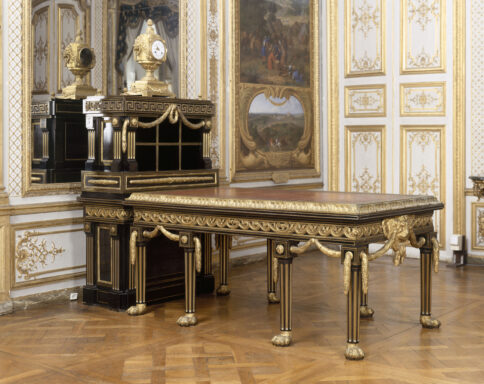
The desk with file case and pendulum
Joseph Baumhauer
Circa 1757
Gallery of Battles
The desk with file case and pendulum - Circa 1757
Artist : Joseph Baumhauer
Oak, ebony and brass. Ebony veneer, gilded bronze and leather.
The desk and its file case and pendulum, attributed to the cabinet maker Joseph Baumhauer, with bronzes by Caffieri, was made around 1757 for the art lover and collector Ange-Laurent Lalive de Jully. This piece of furniture, said to be “in the Greek style”, apparent on Louis-Joseph Le Lorrain’s cards, is inspired by Antiquity, which was in fashion at the time thanks to the discovery of Pompeii and Herculaneum. It remains, in the history of decorative arts, one of the finest examples of early Neoclassicism. This desk was acquired by the Duke of Aumale in 1882.
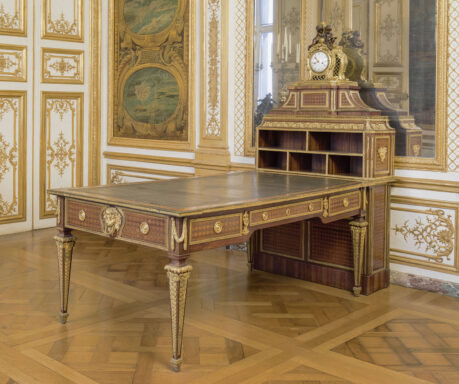
Desk with cartonnier formerly owned by the Duke of Choiseul
Attributed to Simon Oeben
Circa 1770
The Gallery of Battles
Desk with cartonnier formerly owned by the Duke of Choiseul - Circa 1770
Artist : Attributed to Simon Oeben
By acquiring this desk with cartonnier and that of Lalive de Jully, the Duke of Aumale continued his project of furnishing the large suite with Ancien Régime furniture. He knew the prestigious origin of this one and it is probably what incited him to purchase it. At the start of the 19th century, the desk was slightly modified, with the addition of a pedestal intended to accommodate the cartonnier and a step for the clock, which was also replaced. It nevertheless remains a fine example of transition-style production.
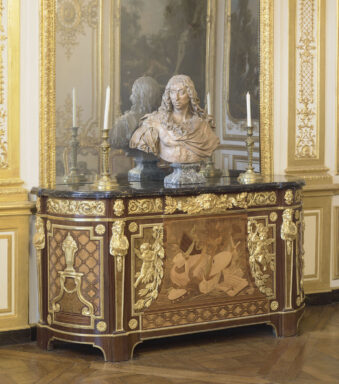
Chest of drawers
Jean-Henri Riesener
1772-1773
The Prince’s bedroom
Chest of drawers - 1772-1773
Artist : Jean-Henri Riesener
Designed in 1775 for the suite of the commissary general of the Garde-Meuble de la Couronne, Pierre-Elisabeth de Fontanieu, by one of the greatest cabinetmakers during the reign of Louis XVI, this chest of drawers was subsequently used to furnish the Parisian mansion of Consul Cambacérès, and was then inherited by King Louis-Philippe. The Duke of Aumale purchased it in 1857. A neighbour of the chest of drawers created by the same cabinetmaker for the King’s bedroom in Versailles, it features several characteristic elements, such as the central trapezoid panel and above all its exceptional marquetry.
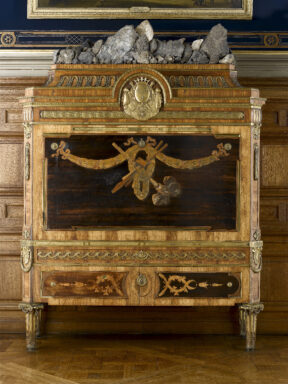
The mineral cabinet by Haupt
Georg Haupt
1774
Antechamber
The mineral cabinet by Haupt - 1774
Artist : Georg Haupt
Oak, rosewood, sycamore, birch, amaranth, holly, ebony, brazil wood.
The mineral cabinet by Georg Haupt, dating from 1774, is made up of various types of wood and topped with minerals. This is one of the rare pieces of furniture belonging to the Princes of Condé that was returned to Chantilly after the revolutionary period. This cabinet, which contained a rich mineral collection, was a gift to Louis-Joseph de Bourbon, Prince of Condé, by King Gustave III, following his visit to Chantilly on 25 March 1771. The prince had created a science and natural history room in the Petit Château, which King Gustave III had visited during his stay.
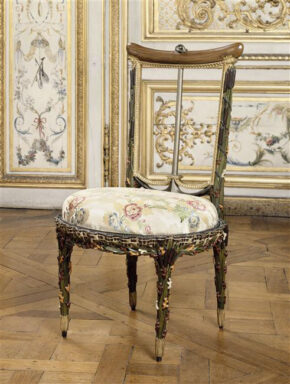
Rambouillet cottage chair
François II Foliot
Circa 1780
The Grande Singerie
Rambouillet cottage chair - Circa 1780
Artist : François II Foliot
This chair is one of a set commissioned from the chairmaker François II Foliot by the Duke of Penthièvre, an ancestor of the Duke of Aumale, in 1780-1781, to furnish the circular room in the shell cottage he had built in the grounds of his château in Rambouillet. The chair’s decor matches that of the cottage: reeds mingled with corals and leaves form its legs, and the seat has the shape of a shell valve. It is not yet known how or when the Duke of Aumale acquired it. The back of the chair is shaped like an anchor, reminding us that the Duke of Penthièvre was Admiral of France.
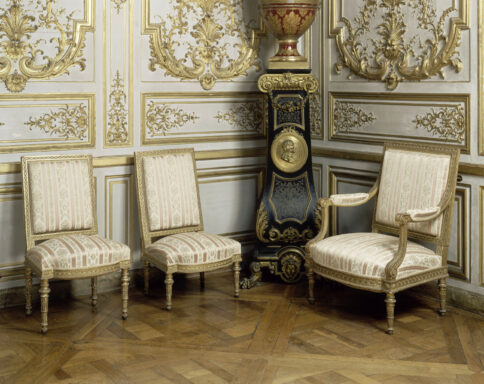
Four Louis XVI period Chairs
Georges Jacob
1787
The Music Room
Four Louis XVI period Chairs - 1787
Artist : Georges Jacob
Carved and gilded beech wood. Louis XVI chairs, covered in watered silk.
The decorator Eugène Lami had the Duke of Aumale purchase these four prestigious chairs from Étienne-Anne Escudier’s curiosity shop in 1845. The four chairs were ordered in 1787 from Georges Jacob by King Louis XVI for his Games Room in the Château de Saint-Cloud.
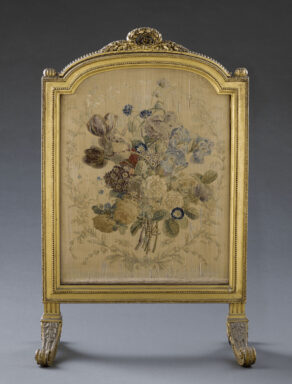
Fireplace screen from the Count of Provence’s bedroom in Versailles
Jean-Baptiste Boulard
1788
The Large Corner Room
Fireplace screen from the Count of Provence’s bedroom in Versailles - 1788
Artist : Jean-Baptiste Boulard
This screen was delivered to Versailles in 1786 by the joiner Jean-Baptiste Boulard, for the bedroom of the count of Provence, Louis XVI’s brother. The upholsterer Capin was in charge of upholstering it with a gros de Tours decorated with flowers, palm trees and birds’ nests on a white background.
The detachable frame made it possible to easily change the fabric between winter and summer. Included in the garde-meuble at the time of the court’s departure in 1789, it was then successively owned by Jean-Jacques Régis Cambacérès, second consul, the Dowager Duchess of Orleans, and Louis-Philippe, who had it sent to the Château d’Eu in 1824; the Duke of Aumale purchased it at the auction of his father’s belongings. In 1841, the screen is mentioned in the suite of the Duchess of Nemours: at the time it was upholstered with a pink Beauvais tapestry decorated with a magnificent bouquet of flowers au naturel.
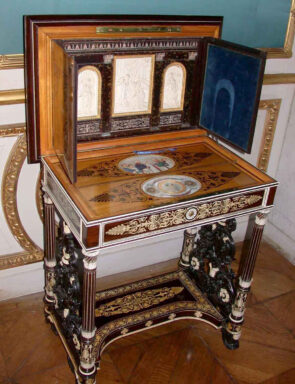
Prayer and needlework table
Gabriele Capello
1844
The Duchess’s bedroom (The Private Suites)
Prayer and needlework table - 1844
Artist : Gabriele Capello
Capello was one of the greatest 19th century Italian cabinetmakers, at a time when the techniques and traditions of skilled craftsmen were being challenged by the beginnings of industrialisation. As the label inside the drawer explains, this table was made in 1844 on commission from Marie-Christine of Bourbon-Siciles, who gave it as a gift to her niece, the Duchess of Aumale, when she got married. The sumptuous decor features ivory and rosewood marquetry. The tiny mosaic decorating the tabletop depicting the port of Naples and Vesuvius erupting is the work of G. Barberi. The ingenious design of this table enables a second tabletop to be liberated. The latter is decorated with miniatures of members of the Duchess’s family and that of her aunt, from whom she received this gift. A needlework box can be found inside the drawer. The second tabletop conceals a veritable mini oratory, with tortoiseshell compartments containing a prayer book and rosary beads, as well as an altarpiece adorned with three ivory plates depicting the Annunciation, Saint Amelia and Saint Christine.
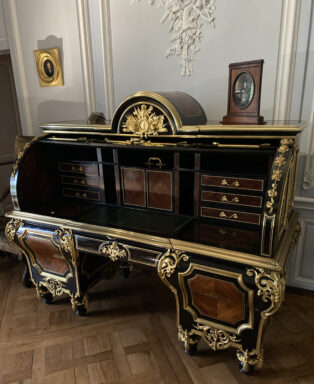
Cylinder desk
Jean-Michel et Guillaume Grohé
1847
The Duke of Aumale’s Bedroom
Cylinder desk - 1847
Artist : Jean-Michel et Guillaume Grohé
Oak with pear wood, rosewood veneer, ebony and brass. Gilded bronze.
This cylinder desk by the cabinet makers Jean-Michel and Guillaume Grohé was a gift to the Duke of Aumale from his father Louis-Philippe in 1847. It is the type of desk referred to as a “minister desk”, with two pedestals descending to floor level on either side. It features an effigy of Louis XIV, depicted in the small bronze medallion on its upper part, which bears his name.
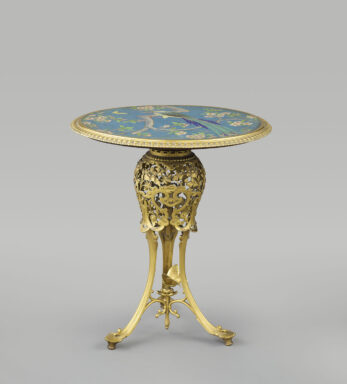
Cloisonné enamel pedestal table
Édouard Lièvre & Émile Reiber, Maison Christofle
1874
The Grande Singerie
Cloisonné enamel pedestal table - 1874
Artist : Édouard Lièvre & Émile Reiber, Maison Christofle
Designed by Édouard Lièvre and Émile Reiber, and made by Christofle, this model featuring a blue background decorated with a bird and plum blossoms is representative of Japonisme as it emerged at the end of the 19th century, giving renewed focus to the cloisonné enamelling technique. The top of its tripod legs is made up of plant stems forming a bulb upon which the tabletop sits.

